Figure 1-1: Now your hand is holding an eReader while you look at a hand holding an eReader. This model is a Kindle.
Chapter 1
Booking It to an eReader
In This Chapter
 Defining an eReader
Defining an eReader
 Looking at dedicated eReaders
Looking at dedicated eReaders
 Examining tablets
Examining tablets
When you were young, a book was a book. A sheaf of papers, imprinted with inked letters of great wisdom or great wit, and clamped together within cloth-covered cardboard. (If you really wanted to go first-class, the covers were leather and the edged were gilded.) What a wondrous piece of technology: it was portable, you could make notes within it, and you could store it away for future reference.
Ah, but that was then and this is now. Today we’re much of the way toward a time when books will exist without paper, without ink, without covers. They’re mostly called eBooks. And they exist within the world of personal electronic devices: eReaders, tablets, smartphones, and laptops.
What ever will we do?
We will read.
A book is still a book. The move from ink on paper to tiny dots onscreen is a matter of media. Every ink-on-paper book you’ve read in the last two decades or so has — at some point in its process — existed in digital form.
An e What?
An eReader is an electronic system that can download (make a copy) and store thousands of full-length books, magazines, newspapers, and other publications.
Table 1-1 eXplaining eReaders
|
Layman’s Terms |
What It Is |
Example Brands |
|
eReader (or dedicated eReader) |
A specially designed, single- purpose hardware device. Typically the smallest, lightest, easiest-to-use, and least expensive option. |
Amazon Kindle Barnes & Noble NOOK and NOOKcolor Kobo eReader Sony Reader Other, lesser-known devices of this sort exist. |
|
Tablet |
A miniaturized computer that can run one or more eReader programs and store books. These devices are generally larger, heavier, pricier, and in some ways more complex. The reading experience is very similar to an eReader. |
Apple iPad BlackBerry PlayBook Samsung Galaxy Tab |
|
Laptop or personal computer |
Runs an eReader program and stores books. Computers are the largest, heaviest, most expensive, and in some ways most complex piece of hardware. The reading experience is very similar to an eReader. |
Dell Toshiba Mac |
|
Smartphone |
A phone that runs an eReader program. The lightest device. May be too small for your liking, with a screen about the size of an index card. |
Apple iPhone BlackBerry Bold BlackBerry Curve Phones that run Android |
I discuss each of these options in this book, but let me tell you right up front that, from my point of view, the first two options are the best: an eReader or a tablet. The third and fourth options are, respectively, too large or too small for ease of use. And when I say single-purpose, I realize that almost nothing in our culture is ever that simplistic. An eReader with its power off makes a perfectly adequate paperweight. More to the point, designers are always seeking ways to “converge” technologies. Therefore, many eReaders can also store and play music, serve as your partner in a simple game, or offer very basic web browsing.
Choose the one that best fits your needs, and keep in mind that over the history of technology, devices tend to become more capable and less expensive over time. Today’s single-purpose eReader may be expanded to become more like a tablet. A Kindle is only for reading eBooks, and you can see the Kindle in Figure 1-1.
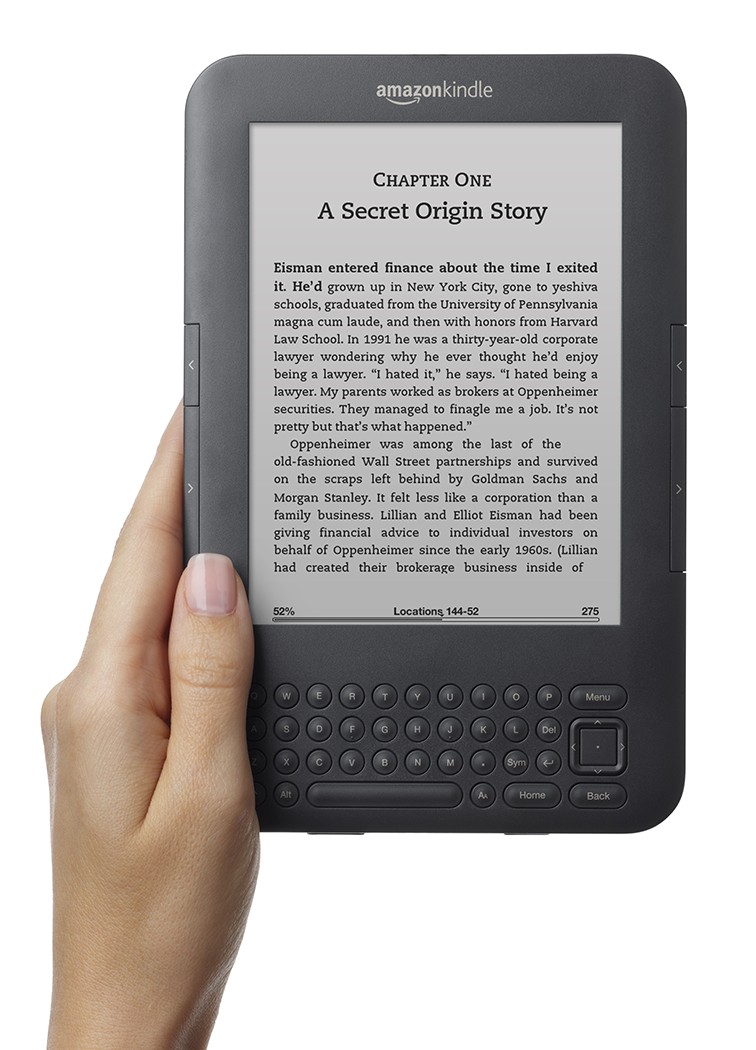
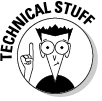
Why Can’t You Be More Like Your Sister?
I created a couple tables. One compares four of the most popular single- purpose (more or less) eReader devices, and the other table compares the most popular multipurpose tablets.
Comparing dedicated eReaders
In Table 1-2, I display the essential facts of the bestselling Amazon Kindle 3 and the similar Kobo eReader — both basic E Ink devices — as well as the hybrid devices from Barnes & Noble: the NOOKcolor (which uses a color screen) and the NOOK Simple Touch (which has an E Ink touchscreen). Figures 1-2 and 1-3 show the Kobo and NOOK, respectively.



Figure 1-2: The Kobo has reading mojo.
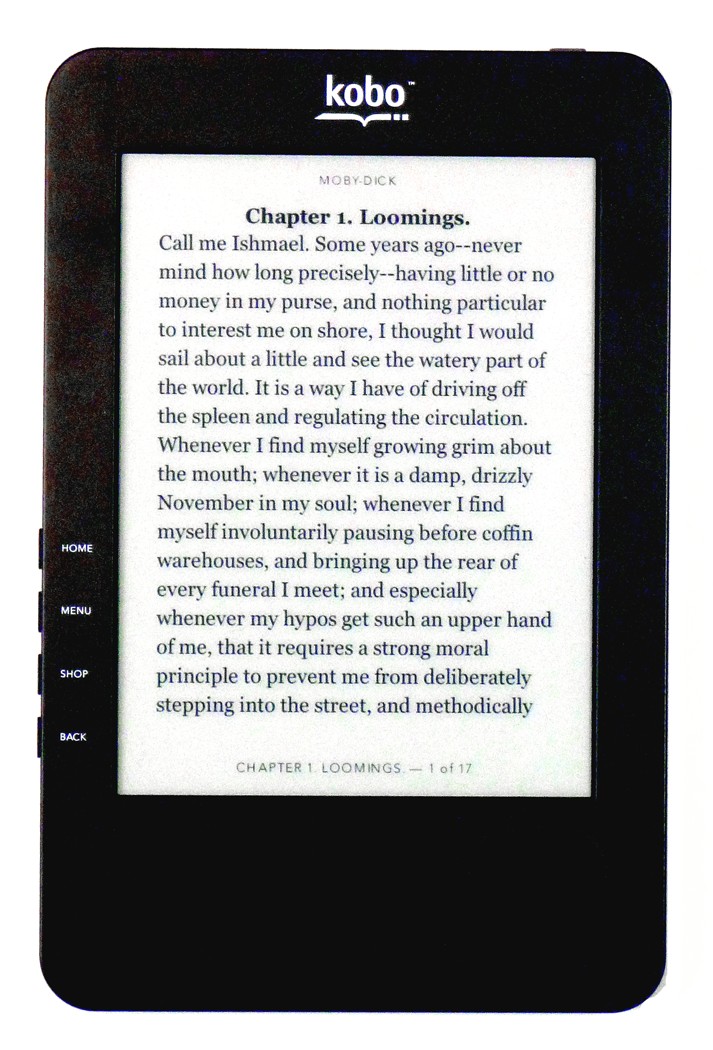
Figure 1-3: The NOOK has you reading a book.
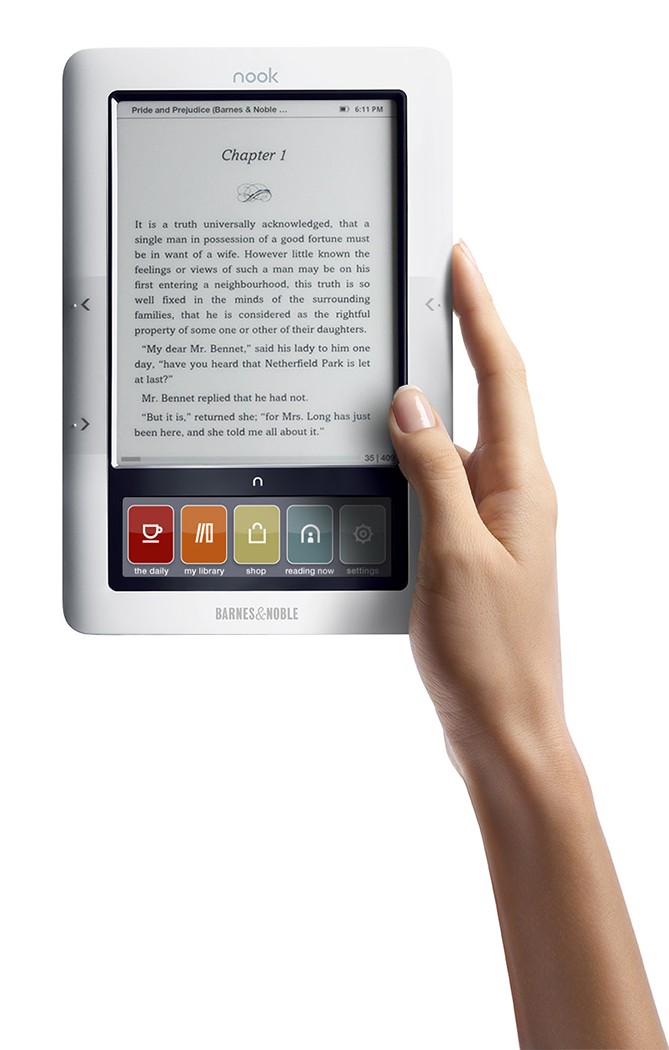
Comparing tablets
The first distinguishing characteristic of a tablet computer is that it’s capable of being programmed and adapted to do more than one thing. It can function as an eReader, but it can also be used to browse the web, show videos, take pictures, play action games, and perform most business functions from word processing to spreadsheets to e-mail.
The second point of difference involves its screen design: a tablet does not rely on a high-quality black-and-white or grayscale low-power reflective E Ink screen. Instead, it uses a high-quality color backlit LCD screen that can react quickly, draw and refresh moving pictures, using the power of its larger, heavier, and more expensive battery.
Table 1-3 compares three of the leading tablet computers: the bestselling Apple iPad 2, the BlackBerry PlayBook, and the Samsung Galaxy Tab (in its 7-inch and 10-inch versions). Figures 1-4 and 1-5 show the PlayBook and the Galaxy Tab, respectively.
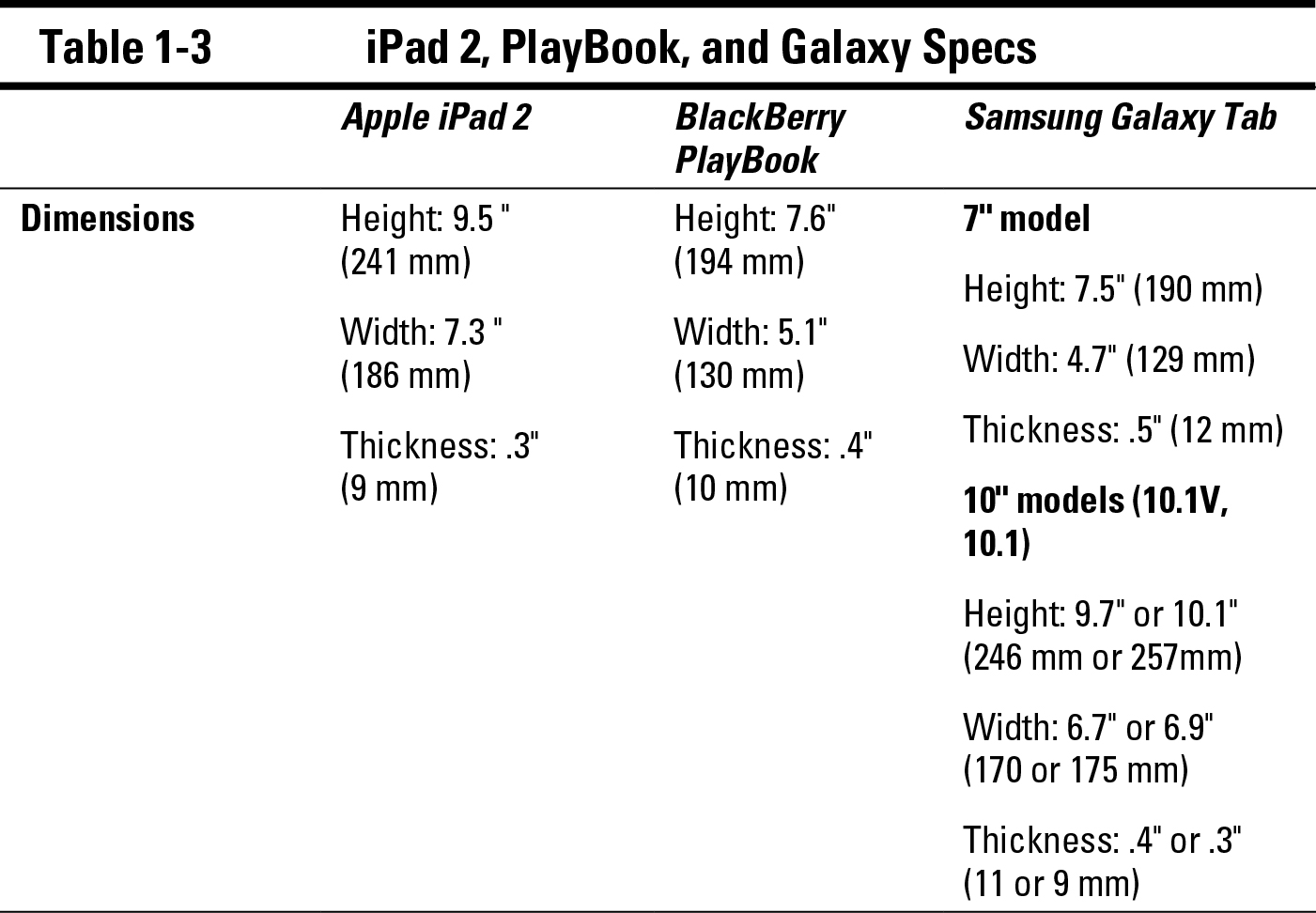
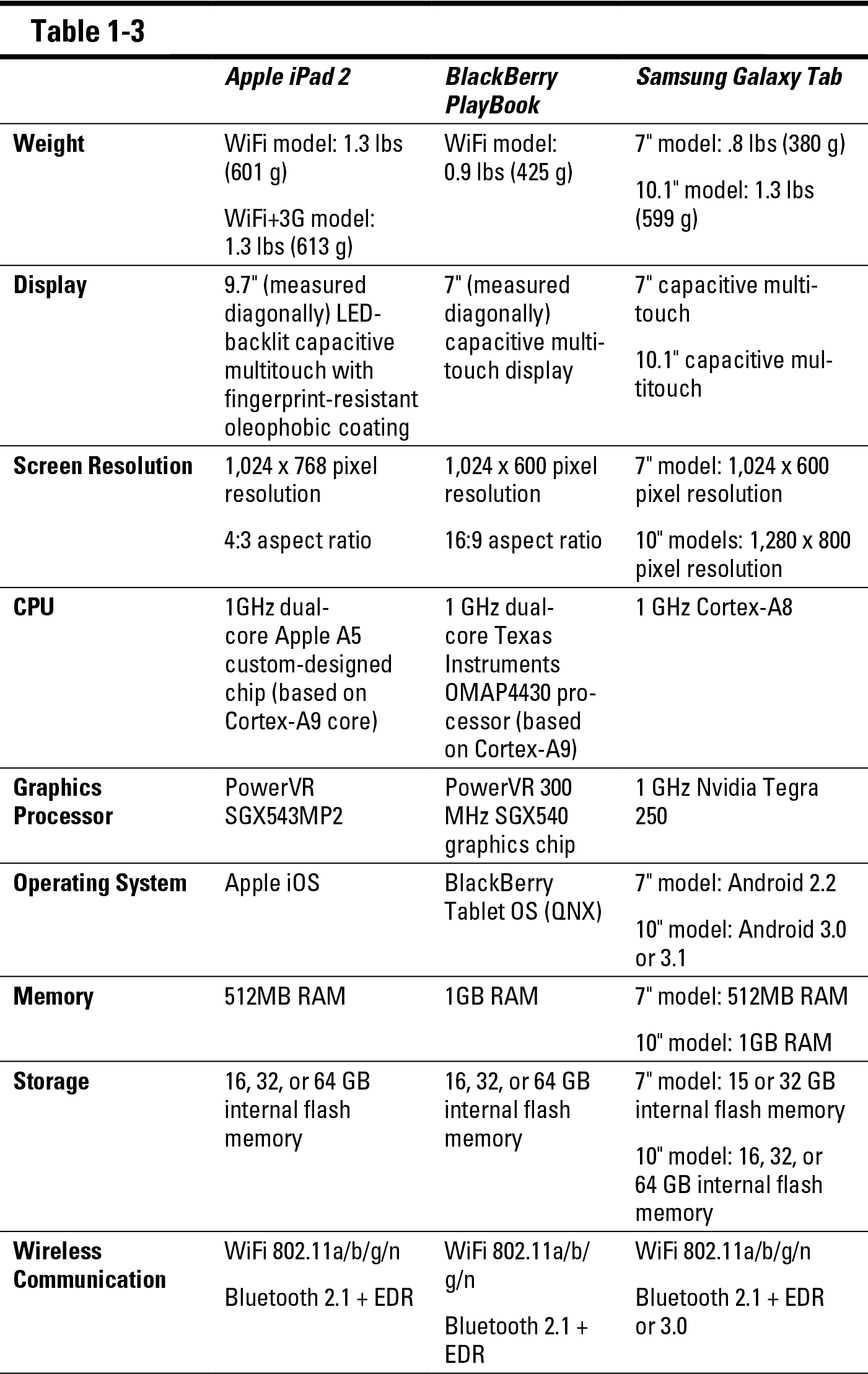
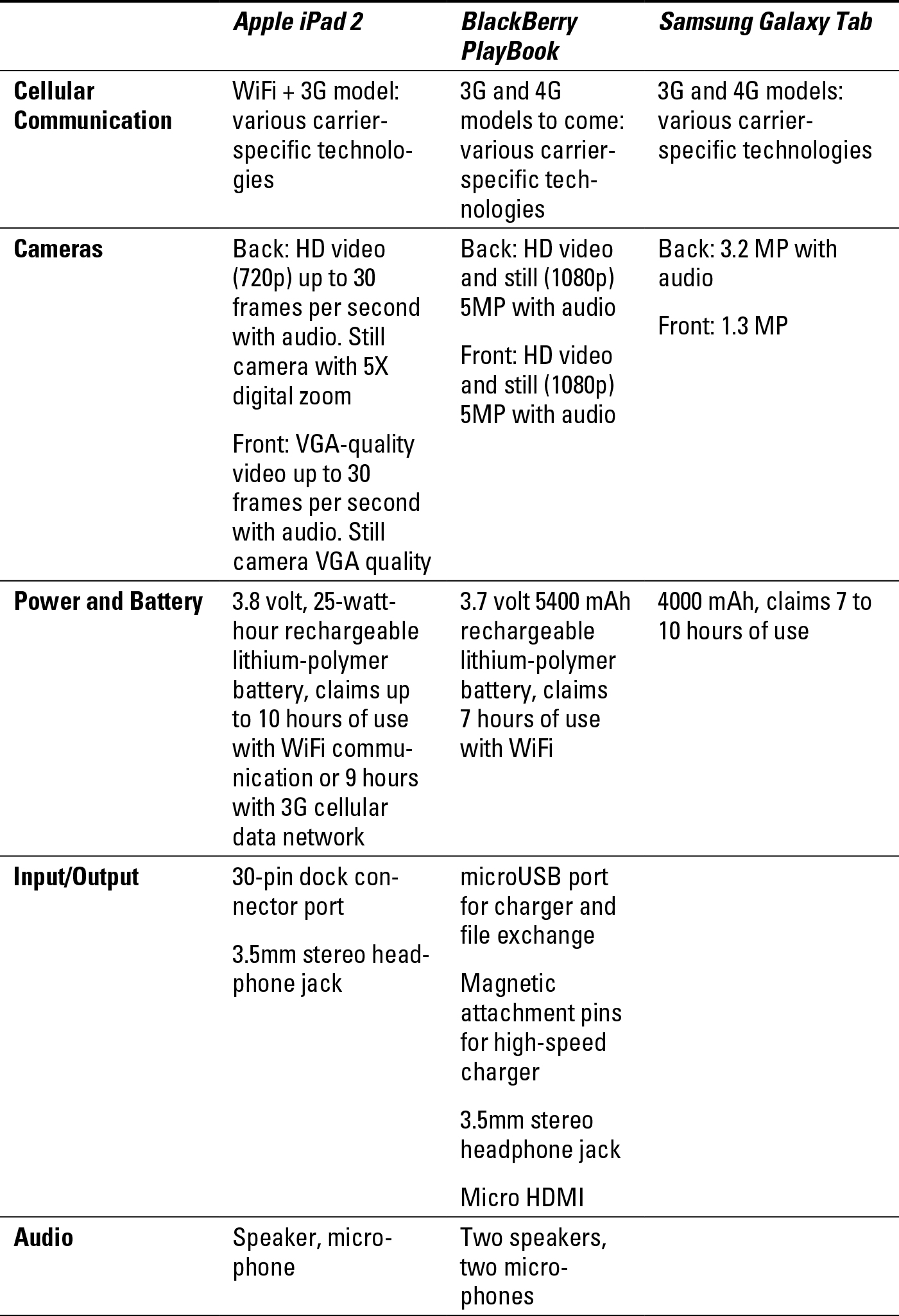
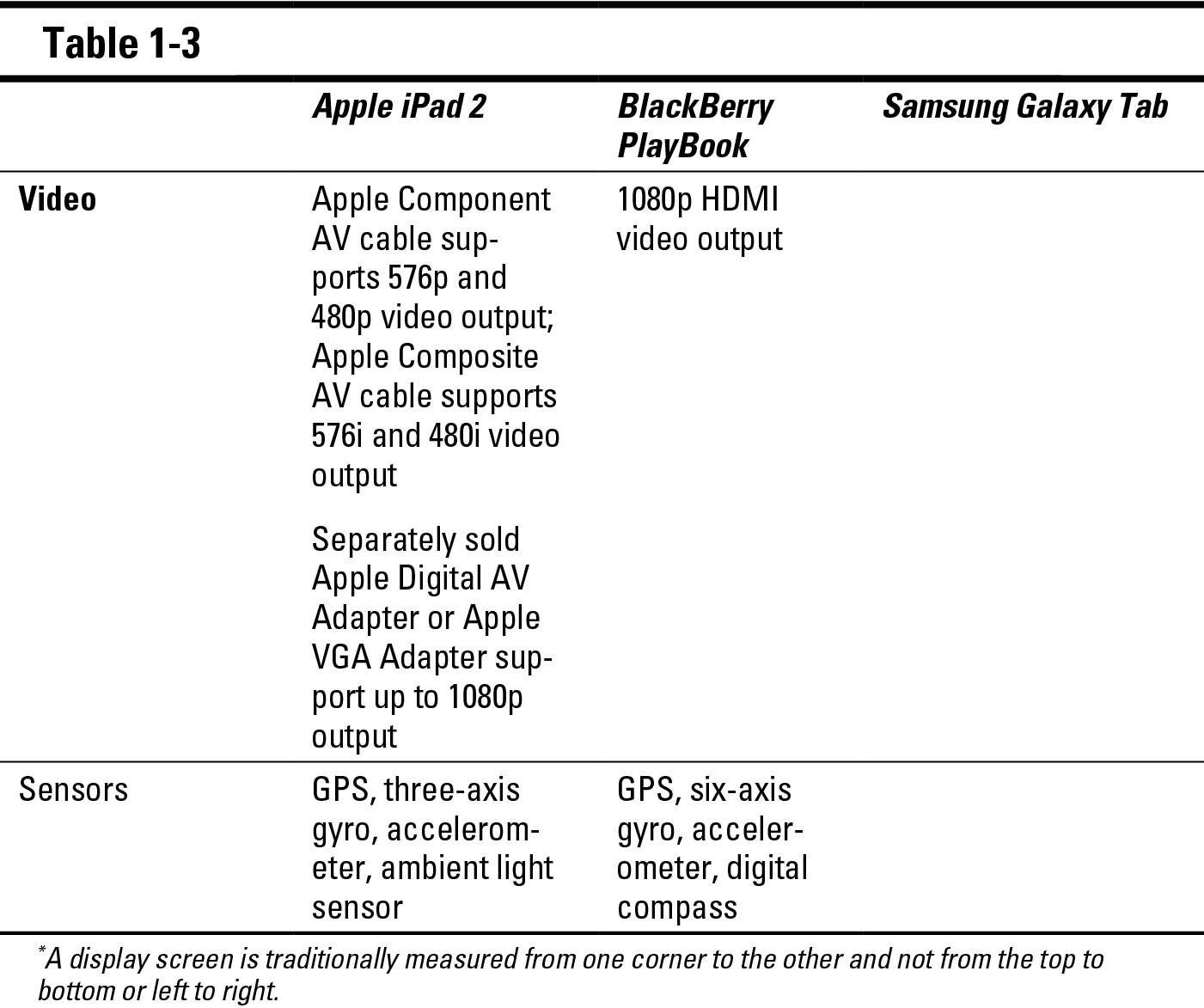
Figure 1-4: The PlayBook is one at which to look.

Figure 1-5: The Galaxy Tab is a great one to nab.

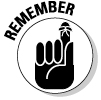 A piece of hardware can be capable of using eReader software (like a laptop that lets you read eBooks), or an eReader can be the actual piece of hardware that uses the eReader software. When I refer to an
A piece of hardware can be capable of using eReader software (like a laptop that lets you read eBooks), or an eReader can be the actual piece of hardware that uses the eReader software. When I refer to an 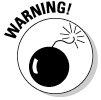 Your fingers are oily. As you swipe or tap or otherwise touch the screen of an eReader or a tablet, you’re likely to leave behind streaks and dirt. It’s not a big deal: Use a soft cloth like the ones used to clean eyeglasses to clear the screen.
Your fingers are oily. As you swipe or tap or otherwise touch the screen of an eReader or a tablet, you’re likely to leave behind streaks and dirt. It’s not a big deal: Use a soft cloth like the ones used to clean eyeglasses to clear the screen.